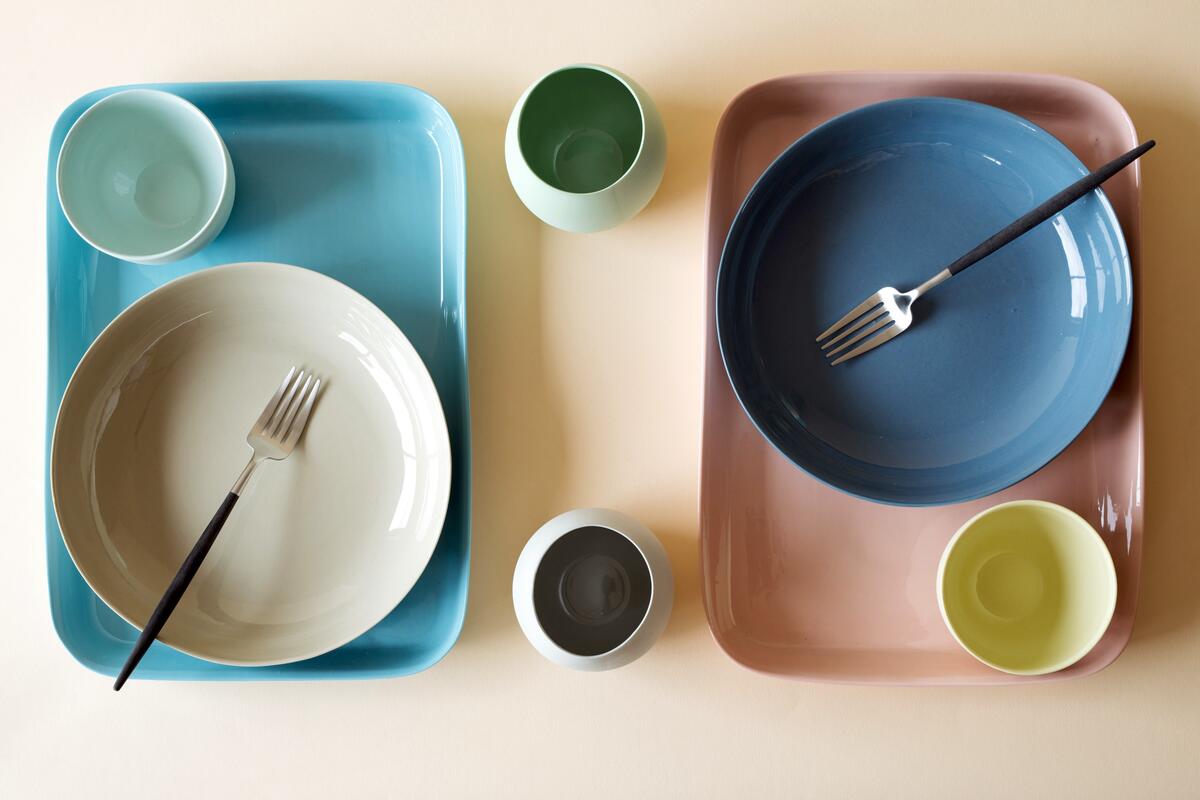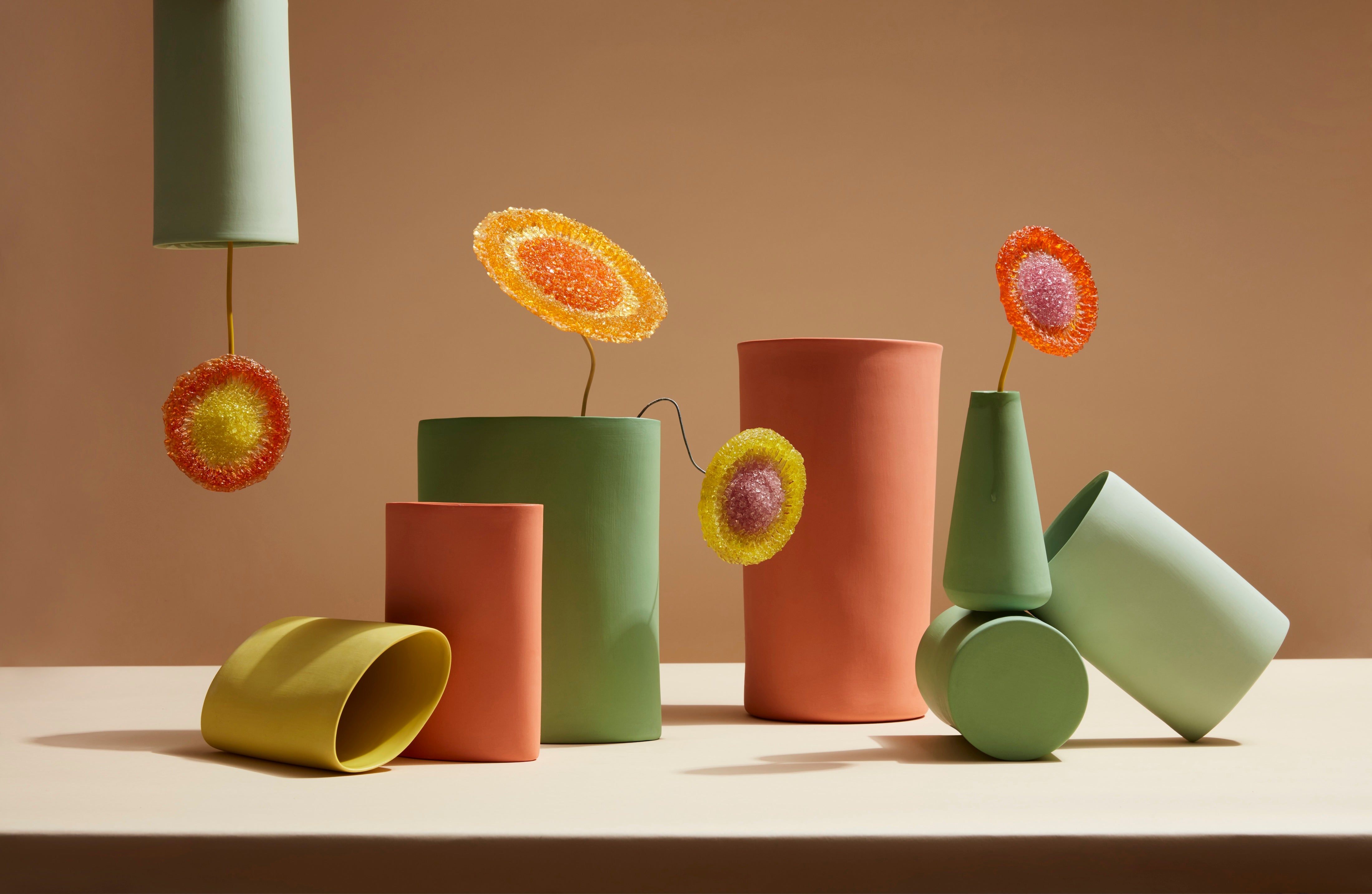Shelley Simpson grew up in Melbourne dreaming of a creative career—on the stage. It wasn’t until she moved to New South Wales in her late 20s that she accidentally uncovered her true passion. She was staying in a house share with a woman who had a pottery shed in her backyard and invited her to use it. “At the time, I probably couldn’t think of anything worse than getting covered in dirt,” she tells Business of Home. One afternoon, while the owner of the house was away, she wandered out to the shed and started playing around. Hours passed, and Simpson recalls it was some of the most fun she’d ever had. “You know when you connect with something—you truly connect with something you love?” she says. “I just became obsessed.”

Over time, Simpson started her own pottery business and grew it by visiting stores in the community, seeing what they were looking for, striking up conversation and trying to fill the gaps in the local market. She continued honing her skills, hired one employee, exhibited at a trade show … and 30 years later, her company, Mud Australia, employs 140 people in 12 locations around the world.
She attributes her growth to the food revolution happening in Australia at the time—with chefs focused on fresh, seasonal produce creating opportunities for her to connect with her community—and the beginning of the internet, which allowed her to reach a whole new world with no geographic boundaries.
Her design process is simple: It all starts with her. “Pretty much everything that I make, I make for myself first,” says Simpson. “I have it made for my home or for use in my community, but it’s something that I need.” If she finds the piece useful, it goes into more widespread production. All of her ceramic pieces echo the same form and are referenced over and over in new collections. In the beginning, she would hand-throw every design and make a mold from it. “I wasn’t a great thrower—I could get the form once, but I couldn’t hand-throw multiple for production,” she explains. Now she gives the person in charge of the molds and prototypes drawings to show what she wants, and he carves it from plaster. (“I’ve adapted my style to work well with him, and we’ve been working together for over 20 years now,” adds the ceramist.) From there, she uses a liquid slip and introduces pigments to the clay so the color goes into the clay body at the very beginning of the process. “This gives it a really great depth of color,” she says.

Like her career, Simpson’s favorite piece happened by accident. The Pebble dinner bowl was originally going to be the base for a light, but when she opened the mold, it broke in half. She liked the shape, so rather than recycling it, she took the bowl to her house, and found herself using it constantly. She then added it to the collection.
She normally would have recycled a broken piece like that because sustainability is a big part of the Mud Australia ethos. “I have two children, and I have always been really passionate about the environment and the world that they’re inheriting from me,” says Simpson. The company has been climate-neutral since 2020, and gets a third of its power from solar panels and the rest of its energy from renewable sources. The company also captures all the rainwater from the roof and uses it to clean the studio. The team recycles everything from clay scraps to lunch leftovers. They recently started collecting clay that fell on the floor during reproduction—initially labeled as “contaminated”—mixing all the colors together to create a mid-gray, and using that clay to make new products to sell in the marketplace. “It’s become our challenge now—how to utilize everything within our studios,” she says. “The whole team gets involved, and it really has become the first question we ask ourselves when we’re doing something: ‘Where does it fit with sustainability?’”

Looking ahead, the studio is working on a new collection of lamps, which marks the first time they’ve worked with an industrial designer, Zachary Hanna, for the electrical side of things. One is cordless and indoor-outdoor, with both a table mount and a floor mount option. “They’re fun and very new for me—more complicated than I probably would have started. I try to keep my designs very simple and very approachable,” says Simpson. “Zach has really captured the essence of design and been very respectful with this collaboration.”
Despite the business’s growth and venturing into new markets, Mud Australia aims to stay true to the simple roots of that potting shed years ago. “We’re very much a hand-made product, and some people would rather have something that’s very precise and machine-made,” she says. “I think it’s just having a little corner of the market and helping to solve those problems of how to bring a little bit of joy into your life with color, keep something quiet in design, and make something that’s really quality that people want to give to their loved ones as well as use in their own homes.”
If you want to learn more about Mud Australia, visit their website and Instagram.




























